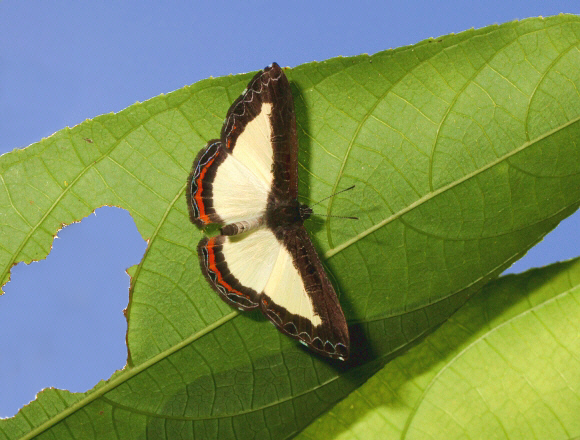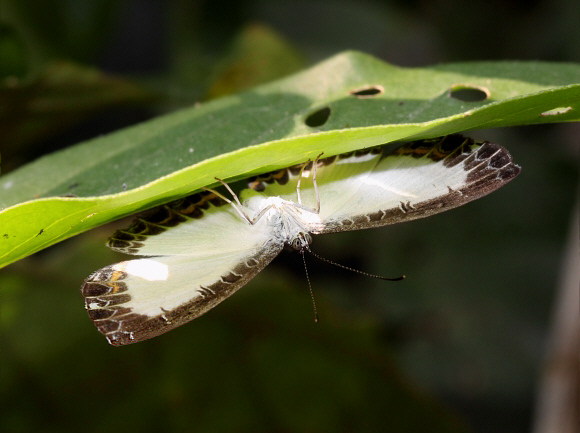 Nymphidium ascolia augea, Tingo Maria, Peru – Adrian Hoskins
Nymphidium ascolia augea, Tingo Maria, Peru – Adrian Hoskins
Introduction
The triangular white patch on the forewings, broad white bands across the hindwings, and orange markings of this butterfly are found in 3 genera of Riodinidae – Synargis, Juditha and Nymphidium. The latter are more delicate in appearance than the others, and have narrower forewings. Other features which help distinguish Nymphidium include the ovoid bluish-white submarginal markings, and the orange bars in the discal cell of the forewings.
There are 33 species of Nymphidium distributed variously from Belize to Bolivia, with the greatest number of species being found in the upper Amazon of Brazil, Ecuador and Peru. Most are generally similar to caricae, varying mainly in the extent of the orange markings. In some species the orange is vestigial or absent, and in mantus the orange is replaced by a beautiful sapphire blue.
Nymphidium ascolia is a common and widespread butterfly, found from Guatemala to Bolivia. The illustrated subspecies augea occurs in Peru and Bolivia.
Habitats
This species is found in disturbed habitats including rainforest, riparian forest and humid deciduous woodland at altitudes from 0-800m. It can be found at light gaps where trees have fallen, allowing sunlight to reach the floor, and can also be seen along sunny trails and forest edge habitats.
Lifecycle
The eggs are white and are laid either singly or in small clusters on the leaves of Inga ( Fabaceae ). The larvae are green and devoid of setae. They live within rolled tubes at the edges of leaves. They possess a full set of ant organs and associate with Parathrechina, Megalomyrmex, Crematogaster, Solenopsis and Pheidole ants.
 Nymphidium ascolia augea, Tingo Maria, Peru – Adrian Hoskins
Nymphidium ascolia augea, Tingo Maria, Peru – Adrian Hoskins
Adult behaviour
The butterflies are usually encountered in flight along sunny trails. They have a characteristic gentle fluttering flight at a height of about 2-3 metres, but spend long periods at rest beneath leaves, with wings outspread, and antennae pointing forward. Males occasionally settle on the ground to imbibe mineralised moisture but this behaviour is not habitual. Both sexes nectar at Alibertia, Psychotria, Croton, Lantana and Cordia flowers. The flight is weak and fluttery.
